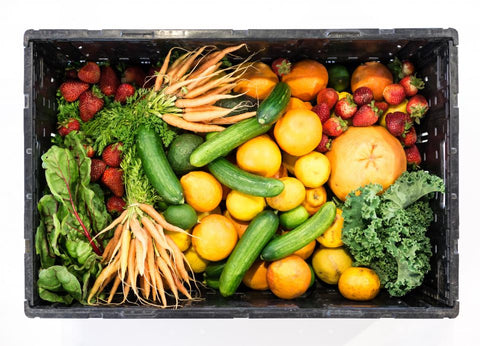
In today’s culinary world, organic food has become the new standard for nutrition. This began with the introduction of organic farming and agriculture. According to IFOAM Organics International, “organic agriculture is a production system that sustains the health of soils, ecosystems, and people. It relies on ecological processes, biodiversity, and cycles adapted to local conditions, rather than the use of inputs with adverse effects.”
In other words, organic farming is a system that promotes harmonious enterprises within the ecosystem (including plants, livestock, people, etc.) and the environment. With the rise of organic farming came a plethora of organic foods. Now, organic foods and all-natural products are everywhere. Grocery stores, cafes, restaurants – you name it.
But, what contributed to the rapid spread of organic food products?
The answer: health food stores. That’s right; health food stores played a major part in the spread of organic foods.
Believe it or not – health food stores play a major part in what you choose to incorporate in your diet. Whether it’s a low-fat tub of Greek yogurt or a freshly picked apple, health food stores have a major role in determining how you select foods to eat. With that being said, local stores like Ralphs, Albertsons, Sprouts, and others have all been major contributors to the spread of organic food. By offering a greater selection of organic foods and goods, sales have skyrocketed within the last few years. 
Before health food stores offered a wide plethora of organic food options, people had limited access to healthy food selections. Those who wanted organic foods had to either grow it themselves or find a limited selection in a few specialty stores. This all changed when organic foods began to go mainstream – which led to health food stores stocking more organic choices than ever.
According to the US Department of Agriculture Economic Research Service, the consumer demand for organically produced foods grew to double digits within the past few years and continues to steadily increase. This has led to immense pressure for grocery stores and health food stores to increase their organic food selections.
When health food stores began to make organic food choices more affordable, sales surged. In 2016, American consumers spent over $43 billion on organic foods. This was the largest ever dollar increase from 2015. This was also the year where the number of organic businesses in the United States grew by 12%, leading to a total of over 22,000 new stores. This was all thanks to healthy food initiatives that stemmed within many different states within the US.
How can health food stores continue to promote organic food?
Health food stores can continue to promote organic food by offering a larger stock, providing samples, and by sharing information regarding health and nutrition.
Health food stores can offer larger selections and greater variety
By introducing new products, consumers will be exposed to a variety of different organic food choices to choose from. Many food retailers are wary about storing organic food, since it can increase the cost of maintenance and overhead. However, it’s important to keep up with demand – and that’s a demand for organic and all-natural food. People can’t eat what they can’t find and won’t eat things they don’t know about. That’s why it’s important to offer new selections, which can increase consumers’ exposure to healthier food options.
Retailers can offer and provide free samples

Source: The Daily Meal
Everyone loves a free sample. Samples are a great way to allow consumers to get a small taste of an organic selection. Many consumers do not know the differences between organic and processed/modified foods, since many have never tried foods that are organic and all-natural. Therefore, by providing a small sample to their consumers, stores can show the quality and differences in organic food. This can lead consumers to make better decisions about the food they decide to purchase. It’s also a great way for stores to gauge reactions and gather feedback on their organic products.
Consumers receive information about health and nutrition facts

Source: FitDay
The best way to promote organic foods is to educate consumers on the nutritional benefits. Consumers need to be able to understand what they are putting into their bodies through the food they eat. By being able to compare organic foods with non-organic foods, consumers will be able to see the clear differences and understand the health benefits. With that being said, health food stores and retailers should have nutrition facts readily available at consumers’ requests.


